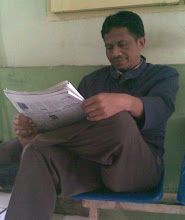pelatihan Peer Teaching untuk guru( PLPG ) SMP &SMA Teaching Equipments supporting Materials. By. M.Faqih Seknun.S.Pd.M.Pd
Problem one
Indonesia is the fourth most populated country in the world after china, India, and the united states of America. In terms of geographic features, it is the largest archipelago country, comprising 13,500 islands, with around 6000 of them inhabited. According to Bureau of central Statistic, in 2008 the country’s total population is 321 million, with a growth rate of 1,3% and literacy rate ( age 15 and over that can read and write ) of 84% ( Biro Pusat Statistik, 2008 )
Problems two
The mastery of English language has become the key to the success for the individuals, society and Indonesian nation in various fields in the global era nowadays.Most Indonesian children, however, get their opportunity to learn English at the formal schools which will be benefical for their future
Problems three
For years, the results of English teaching and learning at the junior & senior high school has not been considered satisfying by parents, professionals as well as the university lectures by seeing the fact that most senior high school graduates neither could use their English for reading the scientific books nor communicate orally.
efforts to improvement of teachers' teaching skills and without having instructional materials that are compatible with the needs and the characteristics of the students. Appropriate instructional materials, therefore, play an important role for the students' learning achievement
Three Teaching strategies
Taba (1966,pp.34-35 ) identifies three inductive thinking skills and then describes three teaching strategies to develop them.
1. Concept formation ( the basic teaching strategy)
2. Interpretation of data, and
3. Application of principles.
Teaching Process
Most lessons have both content and process objectives. Content objectivess identify subject matter:
- Fact
- Concepts
- Generalizations
- Relationship
Fungsi Media sebagai pusat belajar
Gerlach & Ely mengatakan bahwa media apabila dipahami secara garis besar,adalah manusia, materi atau kejadian yang membuat kondisi siswa mampu memperoleh pengetahuan ketrampilan atau sikap.
How and when used instruments.
.Visual Aids.
Blackboards, Bulletin, Boards , advertisements, announcements, booklets, bulletins, charts, diagrams, drawings, graphs, maps, news clippings, notices, pamphlets, photographs, pictures, postcards, posters, stamps and travel brochures.
Audio Aids.
Radio, Phonograph Records, Tapes, Television,Motion Pictures,Cultural Orientation, Proverbs, Humor, Songs,Poetry, Correspondence, Group projects, Field trips, and Games, CD-ROM,. OHP, ON line Data System, Electronic Bulletin Boards, Interaktive Vidios and In teractive Distance Learnin.
Design considerations.
Systematic design and developmentWillis (1992) describes the instructional development process for distance education, consisting of the customary stages of design, development,evaluation and revision.In designing effective distance instruction, one must consider not only the goals, needs, and characteristics of teachers and students, but also content requirements and technical constraints.
Interactivitties
Active learning
Visual imagery
Effective communication
Methods and strategies
Guided practice
Media-based challenges
Inquiry learning
Teamwork
Distance learners
Aims and goals
Modes of learning
Factors which influence success.
Sylvia Charp (1994) notes that with greater autonomy, student characteristics such as active listening and the ability to work independently in the absence of a live instructor become crucial for success. David Godfrey (personal communication, June 17, 1994) found that at most 80 percent of his former students at the University of Victoria may possess such characteristics. As a result, frequent, supportive teacher-student interaction and student-student networking take on increased importance for the remaining 20 percent, as well as facilitating the learning process for all students involved in the program.
What happen ?....
IT Is Important?...
The teacher-facilitator-student triad ..
The site facilitator .
Talab and Newhouse (1993) identified a number of concerns about instructional design and classroom management which were voiced by site facilitators, including
facilitating vs. traditional teaching
preparation
timing and scheduling
classroom logistics
other responsibilities.
ACOT researchers (Apple Classrooms of Tomorrow, 1992) identified these concerns.
student misbehavior and attitudes
physical environment
technical problems
classroom dynamics..
Technology adoption .
training in the skills needed to work with technology
education providing vision and understanding of state-of-the-art developments and applications
support for experimentation and innovation
sufficient time for learning and practice..
The end....by anggi faqih..( anggifaqih@rocketmail.com.)
Jumat, 05 Februari 2010
Langganan:
Posting Komentar (Atom)

Tidak ada komentar:
Posting Komentar